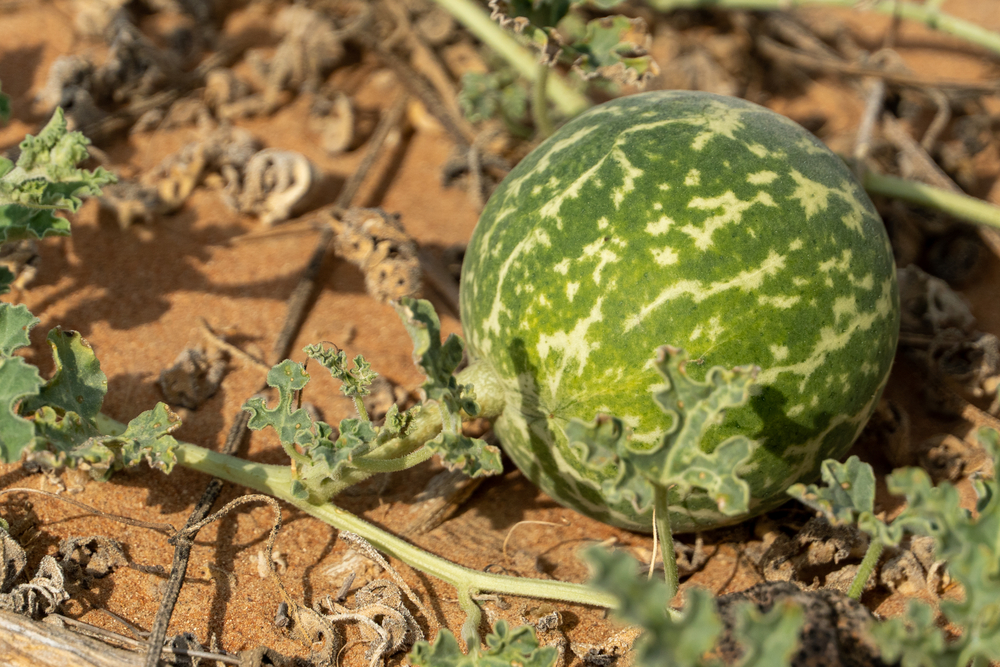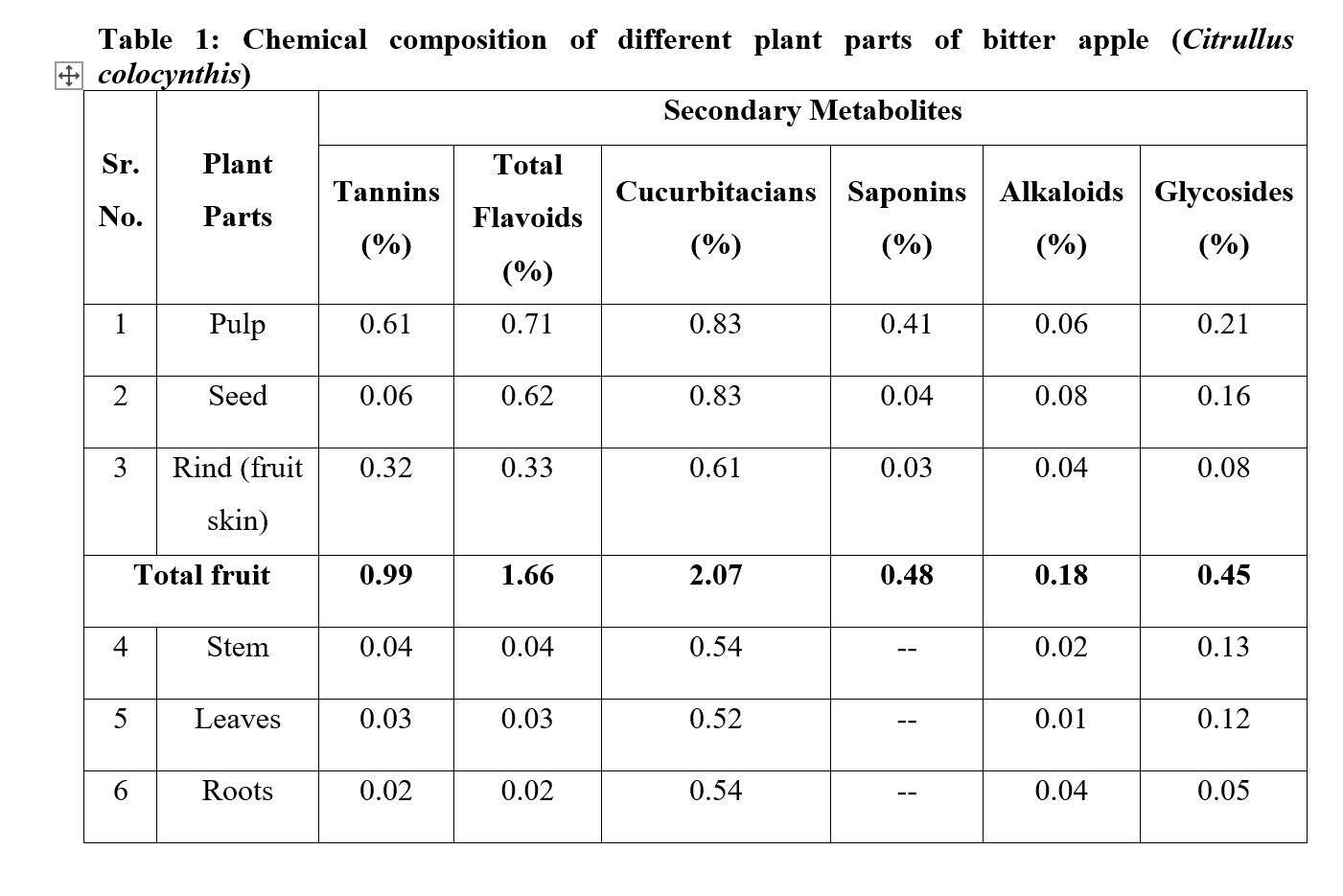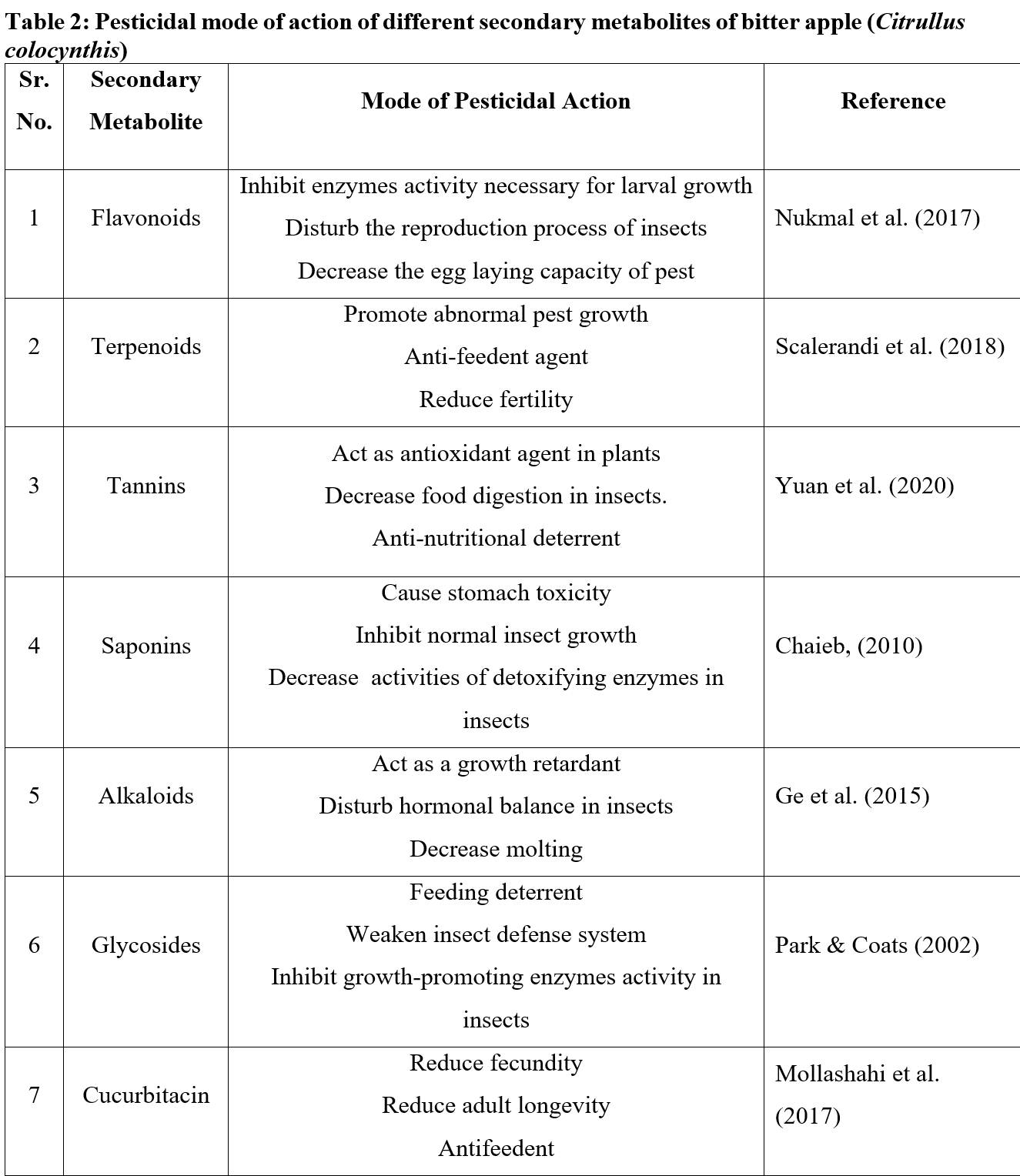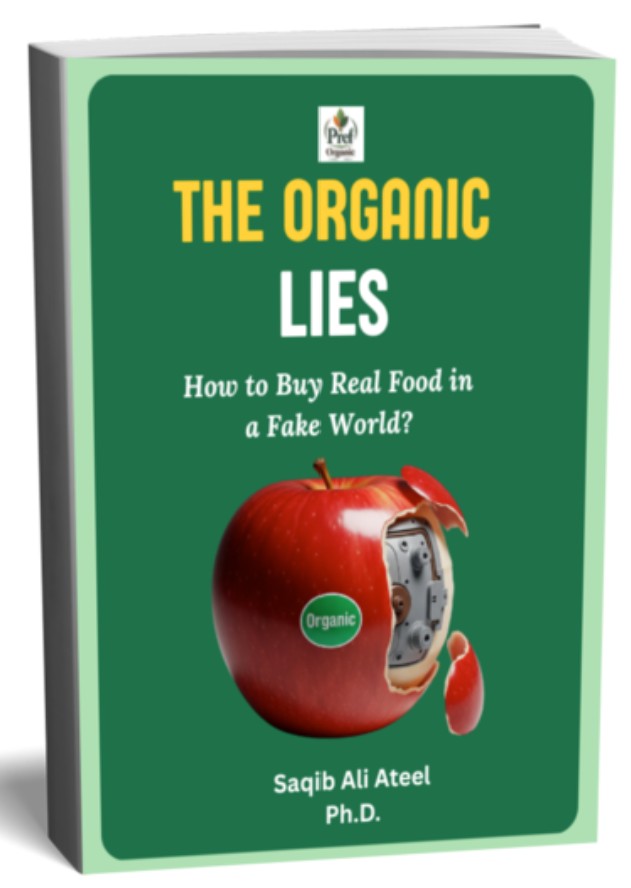Bitter Apple Spray Can Control Whiteflies, Aphid and Other Crop Insects and Reduce Your Input Costs To Make Organic Farming a Profitable Business
By
Saqib Ali Ateel
&
Salman Ahmad
Ph.D. Agronomy
Recent studies got conducted by the Agricultural Department in South Punjab, Pakistan, have proved that bitter apple spray can have inhibiting effects on various pests, including whiteflies, Jassid, Thrips, Aphid, and in some cases, Pink bollworms.
The history of using herbal extract for pest control in agriculture goes back to 400 years BC. During the 19th century, extensive research on synthetic chemicals and industrialization trends of synthetic chemicals/ pesticides in the agriculture sector became widespread due to their rapid pest killing action and easy accessibility. However, it has damaged the environment, destabilized the ecosystems, and biodiversity besides taking on human health. There are about 200 diseases associated with residual effects of synthetic pesticides. So there is a dire need to minimize the use of pesticides, especially on edible crops. An alternate method of pest control is the use of plant based extracts (botanicals). These botanicals naturally contain natural substances like tannins, terpenoids, alkaloids, flavonoids etc. which can be used as repellant, fumigant, anti-feedent, toxicant and pest growth retarding agents.
Why Botanical Sprays?
Mostly synthetic pesticides contain one active poison with usually one mode of action. After repeated synthetic chemical use, target pests gradually develop resistance against that particular chemical as a natural phenomenon of survival. This situation worsens over time, making that chemical ineffective for controlling the pest, increasing the cost of production, and decreasing crop yield. While botanical pesticides contain several secondary metabolites with different modes of actions, pests are challenging to develop resistance against them. Besides this, these botanicals have negligible residual effects and do not cause environmental pollution as well.
Bitter Apple Spray as Botanical Pesticide

One of the plants with practical pesticidal effects is Citrullus colocynthis (common names are bitter apple, bitter melon, kaur tumba). It is a herbal plant commonly found in sandy lands of Asia, Arabia, Africa and Mediterranean regions, where it grows as a weed in various crops. It is used as a herbal remedy for treating diseases like ulcers, tumours, tuberculosis, constipation, joints pain, and anaemia for centuries. Some studies showed that bitter apple also has a significant role in controlling crop pests. This short review revealed the chemical composition and pesticide effects of bitter apple.
Chemical Composition of Citrullus Colocynthis (Kaur Tumba)
The seed of bitter apple has 17% oil, and its chemical composition is similar to that of flaxseed. Bitter apple has many secondary metabolites in different plant parts like leaves, root, stem fruit and seed. However, the fruit has a top portion of metabolites. These include tannins, terpenoids, alkaloids, flavonoids, saponins, glycosides and cucurbitacins. In addition to these compounds, bitter apple also contains nutrients like calcium, magnesium, phosphorus, sodium, potassium and some organic acids, acting as a plant growth promoter. This details shows why bitter apple spray can effectively control some of the most dangerous crop pests.

When you apply bitter apple spray, the secondary metabolites of this herb disturbs life of various pests in a way that we find it helpful to maintain Economic Threshold Level (ETL), without application of pesticides.

Some Pieces of Evidence In Favor of Bitter Apple Spray Against Pests
Soliman et al. (2005) reported high toxicity of bitter apple extracts in different solvents for controlling cotton aphid.
Mullai and Jebanesan (2007) reported 100% mortality of the mosquito larva (Culex quinquefasciatus) when treated with bitter apple leaf extract concentration @450ppm.
Rahuman et al. (2008) observed a significant effect of different solvent extracts of bitter apple on mortality of mosquito larva (Culex quinquefasciatus).
Turkey et al. (2009) reported significant mortality of bean aphid (Aphis craccivora) with fruit extract of bitter apple.
Sayeda et al. (2009) documented that the extract of bitter apple has proven effective for controlling cowpea aphid.
Ravi et al. (2011) stated that fruit extract of bitter apple has insecticidal effects on the larva of cotton leafworm (Spodoptera littoralis).
Nadeem et al. (2012) observed significant effects of bitter apple fruit extracts (10% concentration) on progeny development and mortality of red floor beetle.
Soam et al. (2013) reported that bitter apple extract with 500µg/ml concentration leads to 100% mortality of mustard aphid after 24 hours of exposure.
Bashir et al. (2013) reported that bitter apple extract has 20% to 80% control on store grain mites from the 7th to 28th days of application.
Ramzi et al. (2013) observed significant control of locust bean moth larva (Ectomyelois ceratoniae) with fruit extract of bitter apple.
Asiry (2015) reported that foliar application of an aqueous extract of bitter apple results in significant mortality of oat aphid.
According to Khalid et al. (2015), the water extract of bitter apple proved effective against bird cherry-oat aphid (Rhopalosiphum padi ) has ovicidal and larvicidal effects on mosquito species and Aphis craocivora.
Application of bitter apple extract resulted in 100% mortality of mustard aphid after 24 hours of application (Al-Snafi, 2016).
Gulraz et al. (2017) confirmed that the extract of bitter apple in different solvents has anti-feedent effects on cotton bollworm larva (Helicoverpa armigera).
According to Rehman et al. (2009), bitter apple extract reduces the egg-laying capacity of peach fruit fly (Bactocera zonata) and mortality of adults of turnip aphid (Lipaphis Erysimum).
Mollashsi et al. (2017) revealed that the botanical extract of bitter apple significantly decreased the grasshopper population (Chrotogonus trachypterus).
Suggestions
Effects of bitter apple spray on beneficial insects should also be studied.
A proper dose of different plant parts should be investigated.
The effectiveness of extract under different climatic conditions should be measured.
The age of fruit or other parts used for making extract should be explored.
Detailed chemical analysis, synergistic and antagonistic effects of different metabolites of bitter apple also needed to be investigated.
Conclusion
Synthetic chemicals have many ill impacts on our environment and health. To protect crops from insect pests and save the environment, there is a dire need to find some alternatives. One of the options is the use of plant based extracts. Bitter apple spray contains several chemicals with proven insecticidal properties on many sucking and store grain pests. So its extract can be used as an alternative to conventional pesticides.
We have recently collected evidence that bitter apple spray not only controls dangerous crop insects but also help our friendly predators to grow and outnumber the dangerous ones.
However, there is further need to investigate some unexplored features of bitter apple-like effect on beneficial insects, influence climatic variables on the effectiveness of botanical, and detailed chemical analysis of secondary metabolites.
- Home
- Organic Farming
- Bitter Apple Spray
Express Your Opinion
We find value in differences between learning, interpreting and overall opinions. Please share your thoughts freely about this topic, but always remain respectful. You can preview and edit on the next page before your submission is sent in. You will also be informed about this site's privacy policies. Thank you for your contribution.
References
Ahmed, M., Peiwen, Q., Gu, Z., Liu, Y., Sikandar, A., Hussain, D., & Ji, M. (2020). Insecticidal activity and biochemical composition of Citrullus colocynthis, Cannabis indica, and Artemisia Argyi extract against cabbage aphid (Brevicoryne Brassicae L.). Scientific reports, 10(1), 1-10.
Alanazi, N. A. (2019). Insecticidal Activity of Diverse Extracts of the Citrullus colocynthis (L.) Against the Blue Green Aphid Acyrthosiphon Kondoi Shinji. Journal of King Abdulaziz University: Meteorology, Environment & Arid Land Agriculture Sciences, 28(2).
Ali, A. A., Alian, M. A., & Elmahi, H. A. (2013). Phytochemical analysis of some chemical metabolites of Colocynth plant [Citrullus colocynthis L.] and its activities as antimicrobial and antiplasmodial. J Basic Appl Sci Res, 3(5), 228-36.
Ali, A. A., Alian, M. A., & Elmahi, H. A. (2013). Phytochemical analysis of some chemical metabolites of Colocynth plant [Citrullus colocynthis L.] and its activities as antimicrobial and antiplasmodial. J Basic Appl Sci Res, 3(5), 228-36.
Al-Snafi, A. E. (2016). Antiparasitic, antiprotozoal, molluscicidal, and insecticidal activity of medicinal plants (part 2)–plant based review. Sch Acad J Pharm, 5(6), 194-207.
Bashir, M., Gogi, M. D., Ashfaq, M., AFZAL, D. M., Khan, M. A., & Ihsan, M. (2013). The efficacy of crude aqueous extracts of some plants as grain protectants against the stored grain mite, Rhizoglyphus tritici. Turkish Journal of Agriculture and Forestry, 37(5), 585-594.
Chaieb, I. (2010). Saponins as insecticides: a review. Tunisian Journal of Plant Protection, 5(1), 39-50.
cucurbitacious plants against filarial vector Culex quinquefasciatus (Say) (Diptera: Culicidae). Trop. Biomed. 24(1): 1-6.
Khalid, A.A., 2015. Aphidicidal activity of different aqueous extracts of bitter apple citrullus colocynthis (L.) Against the bird cherry-oat aphid, rhopalosiphum padi (L.) (homoptera: aphididae) under laboratory conditions. J. Anim. Pl. Sci., 25: 456-462.
Mollashahi, H., Mirshekari, A., Ghorbani, M., & Tarrah, A. (2017). Insecticidal effect of the fruit extract bitter melon (Citrullus colocynthis) on locust Chrotogonus trachypterus (Orth: Pyrgomorphidae). Biosciences Biotechnology Research Asia, 14(4), 1285-1289.
Mullai, K., and A. Jebanesan (2007). Larvicidal, ovicidal and repellent activities of the leaf extract of two
Nukmal, N., Rosa, E., & Kanedi, M. (2017). Insecticidal Effects of the Flavonoid-rich Fraction of Leaves Extract of Gamal (Gliricidia sepium) on the Coffee Mealybugs (Planococcus citri Risso.). Annual Research & Review in Biology, 1-9.
Park, D. S., & Coats, J. R. (2002). Cyanogenic glycosides: Alternative insecticides?. The Korean Journal of Pesticide Science, 6(2), 51-57.
Rehman J, Jilani G, Khan MA, Masih R, Kanvil S. Repellent and ovi¬position deterrent effects of indigenous plant extracts to Peach Fruit Fly, Bactrocera zonata Saunders (Diptera: Tephritidae). Paki¬stan J. Zool. 2009;41(2):101–8.
Scalerandi, E., Flores, G. A., Palacio, M., Defagó, M. T., Carpinella, M. C., Valladares, G., ... & Palacios, S. M. (2018). Understanding synergistic toxicity of terpenes as insecticides: Contribution of metabolic detoxification in Musca domestica. Frontiers in plant science, 9, 1579.
Soliman, M. M. M., Hassanein, A. A., & Abou-Yousef, H. M. (2005). Efficiency of various wild plant extracts against the cotton aphid, Aphis gossypii Glov.(Aphididae: Homoptera). Acta Phytopathologica et Entomologica Hungarica, 40(1-2), 185-196.
Torkey, H.M., H.M. Abou-Yousef, A.Z. Abdel A zeiz, and E.A.F. Hoda (2009). Insecticidal effect of Cucurbitacin E Glycoside isolated from Citrullus colocynthis Against Aphis craccivora. Aust. J. Basic Appl. Sci. 3(4): 4060-4066.
Yuan, Y., Li, L., Zhao, J., & Chen, M. (2020). Effect of tannic acid on nutrition and activities of detoxification enzymes and acetylcholinesterase of the fall webworm (Lepidoptera: Arctiidae). Journal of insect science, 20(1), 8.
- Home
- Organic Farming
- Bitter Apple Spray
